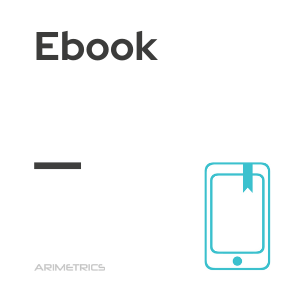
Definition:
An ebook or e-book is a book in digital format, designed to be read on electronic devices such as computers, tablets, smartphones and e-book readers, which are specially created for this purpose. Although ebooks share content with physical books, they are digital files prepared to be read by computer programs. Currently, the most common formats for ebooks are ePub, which is open source and widely used, and mobi, which is the format used by Amazon’s popular Kindle, the most widely used ebook reader in the world. Unlike physical books, ebooks are more like an app due to their advanced functionalities, such as term lookup, dictionary lookup and text translation.
Advantages of ebooks
Ebooks as a reading device have the following advantages:
- Reduced cost: By eliminating the need for physical materials such as paper and ink, and by not requiring physical storage, production costs are significantly reduced, eliminating many intermediaries in the distribution chain.
- Portability: They do not take up physical space like a traditional book, only that of the device in which they are stored.
- Instant availability: They allow you to start reading immediately after purchase, without depending on availability in physical stores.
- Access to additional information: They offer the possibility of instant searches for unknown words and easy navigation between pages.
- Sustainability: As they do not require paper, they are a much more environmentally friendly option.
Ebooks in digital marketing
In digital marketing, ebooks have become a key strategic tool for attracting and retaining customers. Here are some ways in which ebooks can benefit companies:
- Lead generation: Ebooks are an excellent way to capture the attention of potential customers. By offering a free ebook in exchange for contact information, such as email, companies can build a database of qualified leads for future marketing campaigns.
- Customer education: A well-crafted ebook can educate customers on topics relevant to the company’s industry, providing valuable information that helps them make informed decisions. This positions the company as an authority in its field.
- Brand building: By offering high-quality content, ebooks help enhance brand image. Customers perceive the company as a trusted and expert resource, which can increase loyalty and brand recognition.
- Inbound marketing strategy: Ebooks are a key part of inbound marketing strategies, as they attract customers through relevant and useful content, instead of interrupting them with traditional advertising. This fosters a more natural and engaging relationship with the audience.
- Increased engagement: By offering interactive and engaging content, ebooks can increase customer engagement. Features such as links to additional resources, multimedia and calls to action within the ebook can keep readers interested and engaged.
- Market segmentation: ebooks allow companies to target specific market segments with customized content. This can include detailed guides, case studies or research reports that address the particular needs of different audiences.
- Word-of-mouth promotion: A valuable, well-distributed ebook can be shared by readers with their networks, extending the brand’s reach at no additional cost. This can generate a positive word-of-mouth effect and attract new customers.
Best practices for creating an effective ebook
Creating an ebook that is engaging and valuable to readers requires planning and attention to detail. Here are some best practices to ensure that an ebook meets your goals:
- Define clear objectives: Before starting, it is essential to be clear about the objectives of the ebook. Is it intended to generate leads, educate customers, or strengthen the brand? Defining these objectives will guide the content and structure of the ebook.
- Know your audience: Understanding who your target audience is and what information they value is crucial to creating relevant content. Conducting market research and creating customer profiles can help identify audience needs and preferences.
- Quality content: Content should be informative, accurate and useful. Thorough research and providing data backed by evidence increases the credibility of the ebook. In addition, the content should be well organized and written in a clear and concise manner.
- Attractive design: A professional and attractive design enhances the reader’s experience. Using graphics, images and colors that complement the content can make the ebook more enjoyable and easier to read.
- Include calls to action: Incorporating strategic calls to action(CTAs) can guide readers to the next step you want them to take, such as visiting a website, registering for a webinar or downloading another resource.
- Optimization for mobile devices: Ensuring that the ebook is accessible and readable on mobile devices is essential, since many users access the content from their phones and tablets.
- Effective promotion: Once created, the ebook should be promoted through various channels, such as emails, social media, and the company’s website. Using a combination of paid and organic media can maximize reach.
- Measurement and analysis: After publication, it is important to measure the performance of the ebook. Analyzing metrics such as downloads, reading time and conversions can provide valuable information for future improvements.
